Exotic, aquatic plants always arouse interest and curiosity.
Also known as hydrophytes or macrophytes, aquatic plants are characterized by the need to be submerged in water, if not totally, at least a part of the plant.
Aquatic plants are widely used in the decoration of aquariums and in the landscaping of ponds and fountains, but they have also been very common inside houses, cultivated, in this case, inside pots.
There are different types of aquatic plants. Some have deep roots to extract the food they need directly from the soil, others, however, manage to survive only by the nutrients contained in the water.
Aquatic plants are also differentiated by the need to be exposed to light, by their life cycle, by the existence or not of flowers and, of course, by their appearance.
In this sense, aquatic plants give a show in their own right, revealing the most eccentric, beautiful and curious side of nature.
So, let’s find out a little more about these greens that live in water and, as a bonus, learn how to grow them indoors? Keep following the post with us:
Types and Examples of Aquatic Plants
Below we list some of the most popular aquatic plants that can be cultivated without much difficulty. These aquatic plants are especially distinguished by the way they are grown: floating, potted and aquarium plants. Just take a look:
floating plants
Floating aquatic plants, as the name suggests, refers to a group of plants that have the ability to float on water. They are very common in lakes and rivers, but can also be used in landscaping projects on water sources and even pots. Check out the main species below:
Image 1 – Vitória-régia (Amazon Victoria).
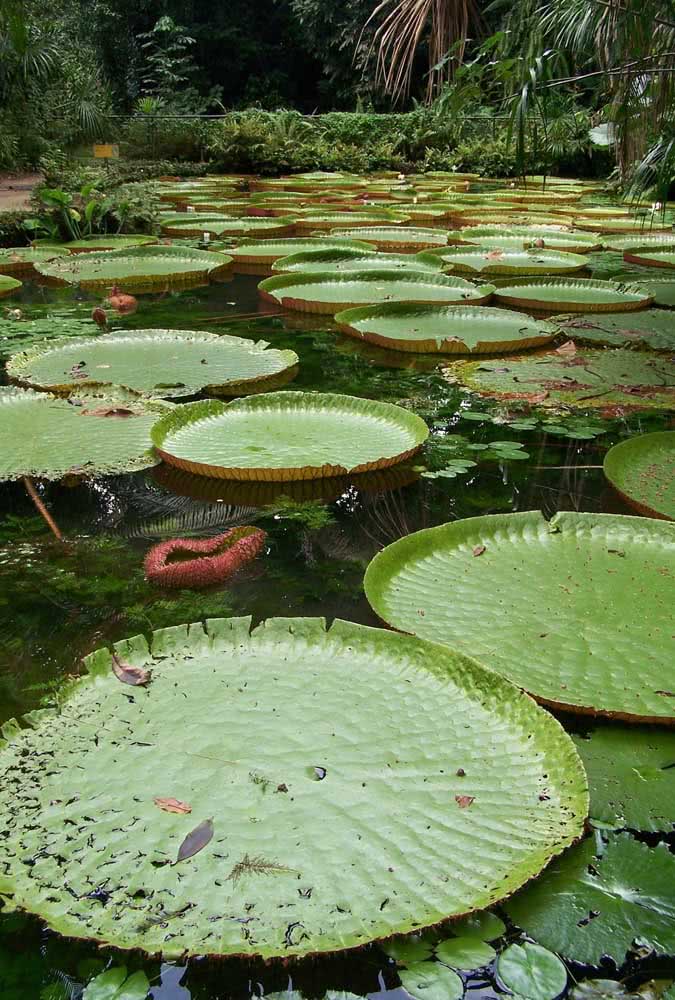
The Victoria Regia is one of the best known aquatic plants. Originating in the Amazon rainforest, the royal victory can be found both in Brazil, Bolivia and the Guianas.
A curiosity: did you know that this is the largest aquatic plant in the world? Its leaves can reach an incredible 2.5 meters in diameter. Another interesting feature of this plant is that its flowers last only 48 hours.
To cultivate the Victoria Regia you need a lake or pond at least three feet deep.
The plant needs full sun and high temperatures, between 28º and 32º.
Victoria regia can be grown in mineral or rain water. The soil must be clayey without the need for many organic compounds.
Image 2 – Duckweed (Lemna minor).
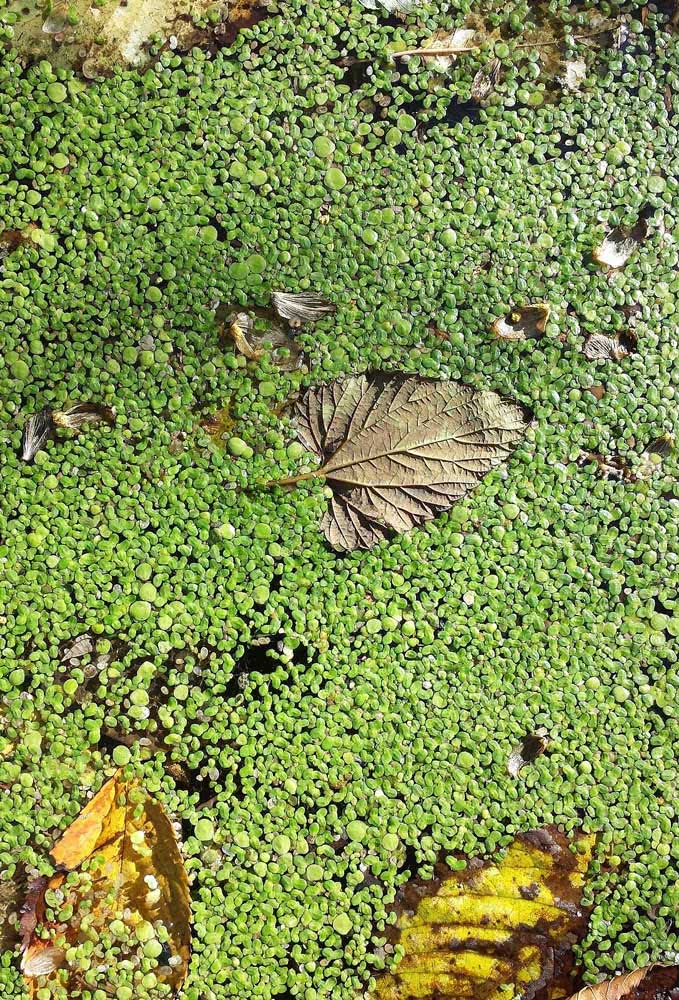
Unlike the Victoria Regia, duckweed is considered the smallest aquatic plant in the world, with leaves that do not exceed five millimeters in diameter.
With a rounded shape and a deep green tone, duckweed really resembles a duckweed, hence the name.
Despite being a floating plant, duckweed is widely used in aquariums, as many species of fish feed on this plant.
Cultivation is very simple, since the plant does not require great care, just a regular change of water and good exposure to light, although it is not necessary to keep it in direct sunlight. Just make sure that the duckweed doesn’t overgrow and end up taking over the entire aquarium.
Image 3 – Water lettuce (Pistia stratiotes).

The water lettuce aquatic plant is very popular among landscapers. The leaves of the plant really resemble a lettuce, which gives the species a very beautiful appearance.
Water lettuce can be grown in ponds, springs and even in pots, as its leaves do not reach more than 20 centimeters.
The plant needs full sun to develop and, preferably, chlorine-free water. In this case, use mineral water or rainwater.
Image 4 – Water hyacinth (Eichornia crassipes)
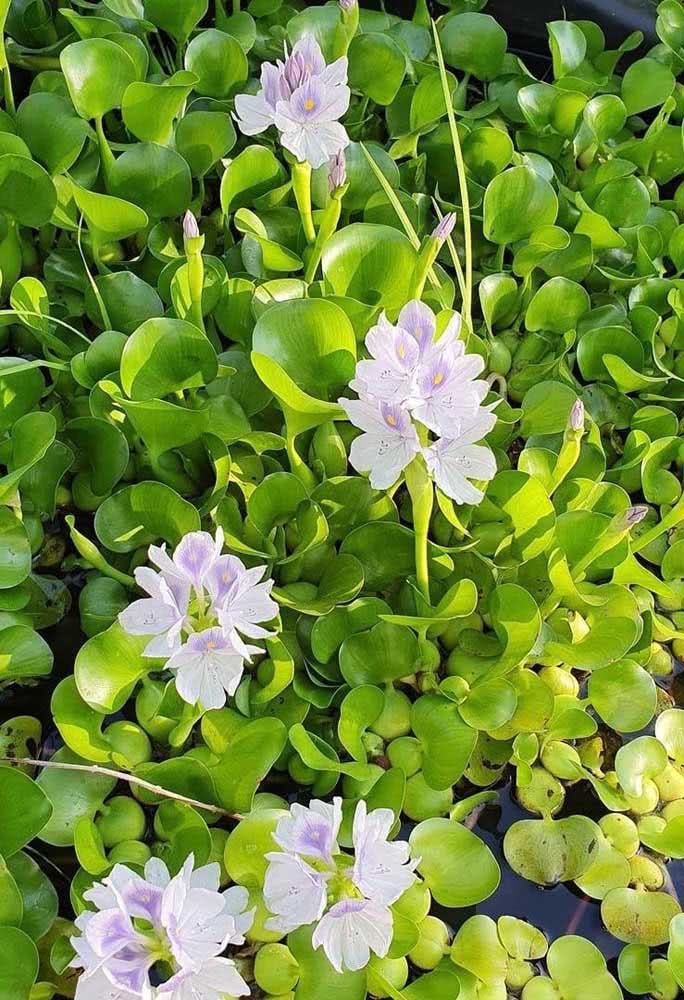
Water hyacinth, also known as water hyacinth, is the perfect aquatic plant for anyone who loves flowers. This is because the species produces beautiful and very decorative flowers in shades of bluish purple.
The cultivation of water hyacinth is simple: just expose the plant to the sun. If it is grown in lakes or ponds, fertilization is not necessary, but if the plant is in pots, it is important to periodically provide a nutritional boost.
Image 5 – Leather hat (Echinodorus grandiflorus).
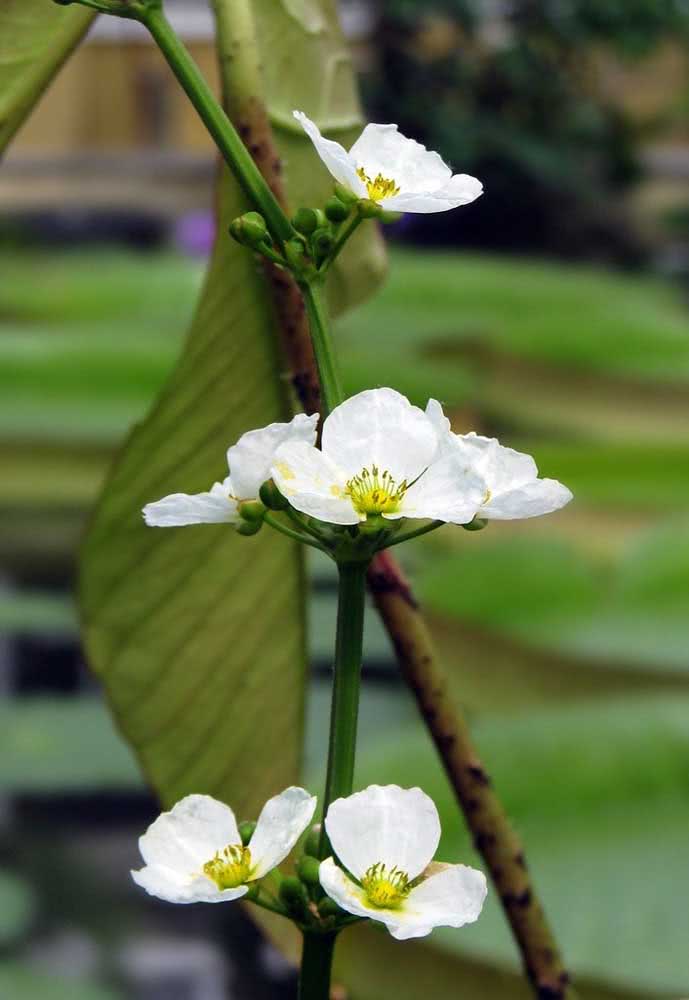
The leather hat plant is widely used to treat bowel problems and inflammation. But not just for that.
The plant also has a very beautiful decorative effect in ponds, water fountains and aquariums.
To cultivate it, just keep the plant under full sun
Image 6 – White Star (Nymphoides indica).
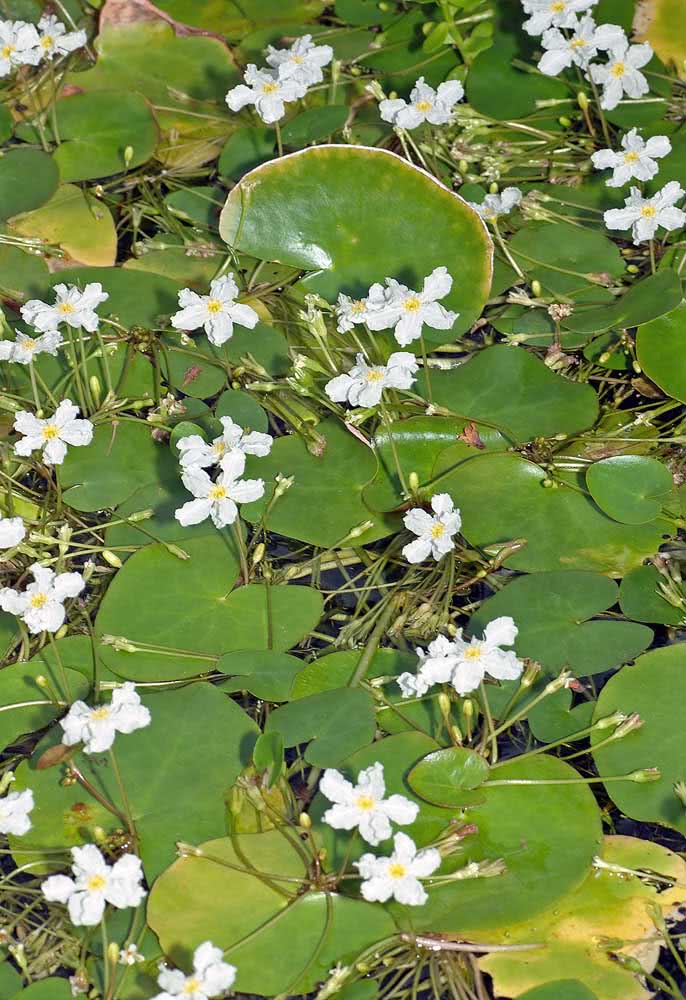
Natural from Asia and Australia, the white star is widely used in the landscaping of lakes and marshes. Its tiny white flowers have five petals, like a star.
Cultivation of the white star should be done in full sun or half shade, although the plant does better in sunlight. It is also important that the lake soil is well fertilized and rich in organic matter.
Image 7 – Mosaic plant (Ludwigia sedioides).
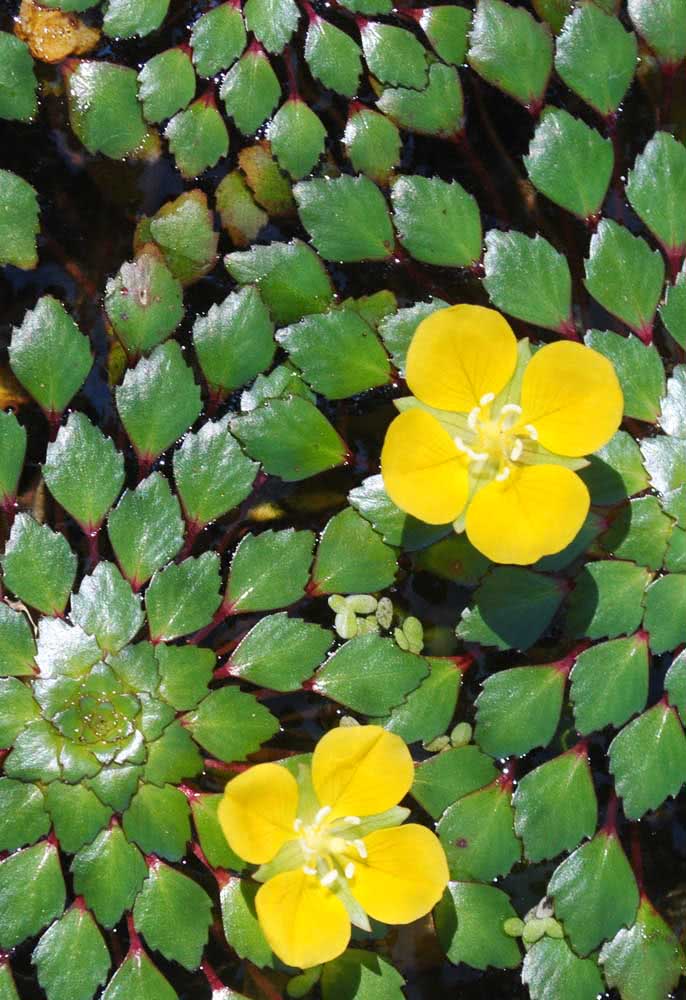
The shape of the mosaic plant is quite curious. Its leaves are lozenge-shaped, creating a kind of groove that makes the plant really look like a mosaic.
Natural from Brazil and Venezuela, the mosaic plant can be cultivated in lakes and water sources with soil rich in organic matter, since the roots are fixed in the earth. The mosaic plant also needs sun, at least eight hours a day.
pot plants
Potted water plants are an option for those who don’t have fountains or lakes at home, but still want to contemplate the beauty of these greens daily. Here are some of the most popular pot species:
Image 8 – Lotus.

Who has never heard of the lotus flower? The flower symbol of Indian Hinduism. The plant has several spiritual representations, such as the crown chakra or the symbolism of purity, as the flower manages to survive even in muddy and dirty waters without losing its beauty.
The lotus flower can be grown in pots and, believe me, it can last for up to 300 years.
Image 9 – Water lilies.
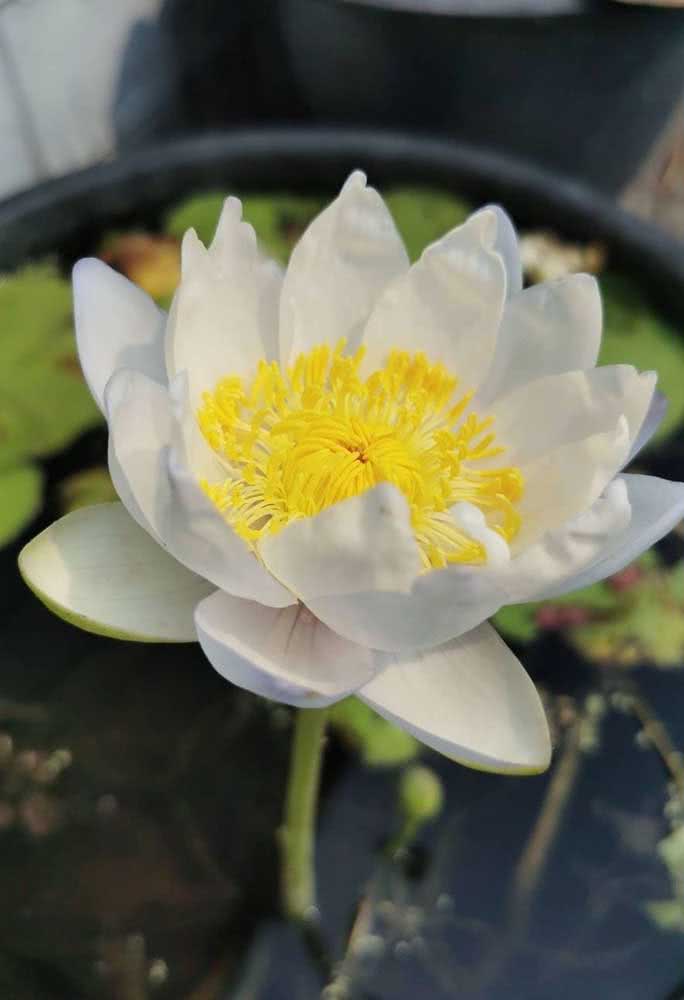
The water lily is another aquatic species with delicate flowers. It can be grown both in pots and in lakes and riverbanks.
The difference with this plant is that it enjoys cold climates, so if you live in a colder region, the water lily is perfect.
Image 10 – Chinese Umbrella (Cyperus alternifolius).

The Chinese Umbrella is a soil plant, but it can be grown inside ponds or in pots with soil that is always moist or even soggy.
Fast growing, the Chinese umbrella enchants for its leaves with erect and slightly curved stems. Growing this plant should be done in half shade, as too much sunlight can burn the leaves.
Image 11 – Nymphaea (Nymphaea).

The water lily is another example of an aquatic plant with exotic and incredibly beautiful flowers ranging from white, pink and blue. The cultivation of the water lily can be done in pots or ponds.
The water lily is a floating plant that needs sun for at least six hours a day. Fertilization is also important for this species. Use slow-release water fertilizers.
Image 12 – Syngonium (Syngonium angustatum).
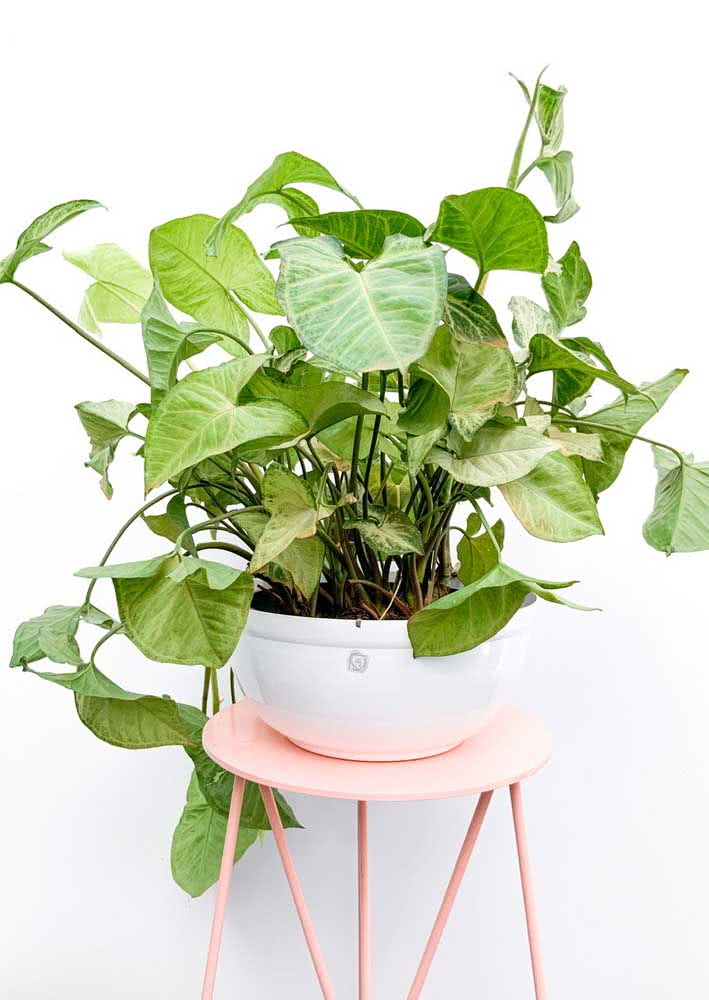
Of all the aquatic plants, the syngonio must be the most popular. The peculiarity of this species is that it can be cultivated both in pots with soil and in water pots.
The syngonio must be cultivated in semi-shade and, for this reason, the plant is perfect for indoor environments.
Image 13 – Horsetail (Equisetum hyemale).
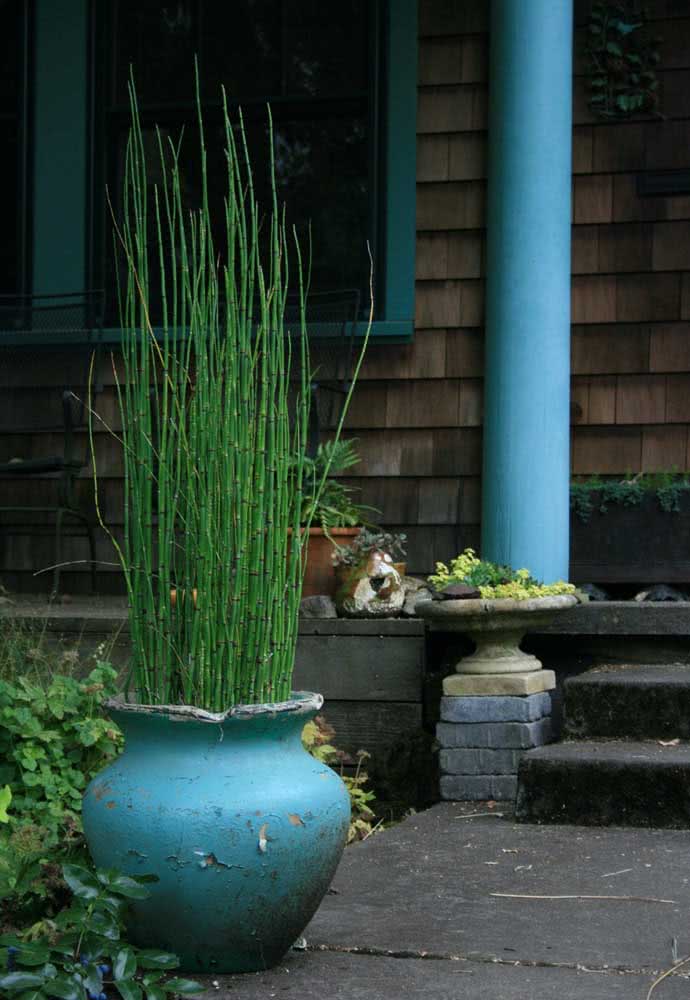
The horsetail, like the syngonio, lives well both in soil and in water. This plant’s differential lies in its thin and elongated stems, capable of making any environment more elegant.
To grow mackerel, provide a place that receives at least four hours of direct sunlight per day.
Image 14 – Black yam (Colocasia esculenta aquatilis).
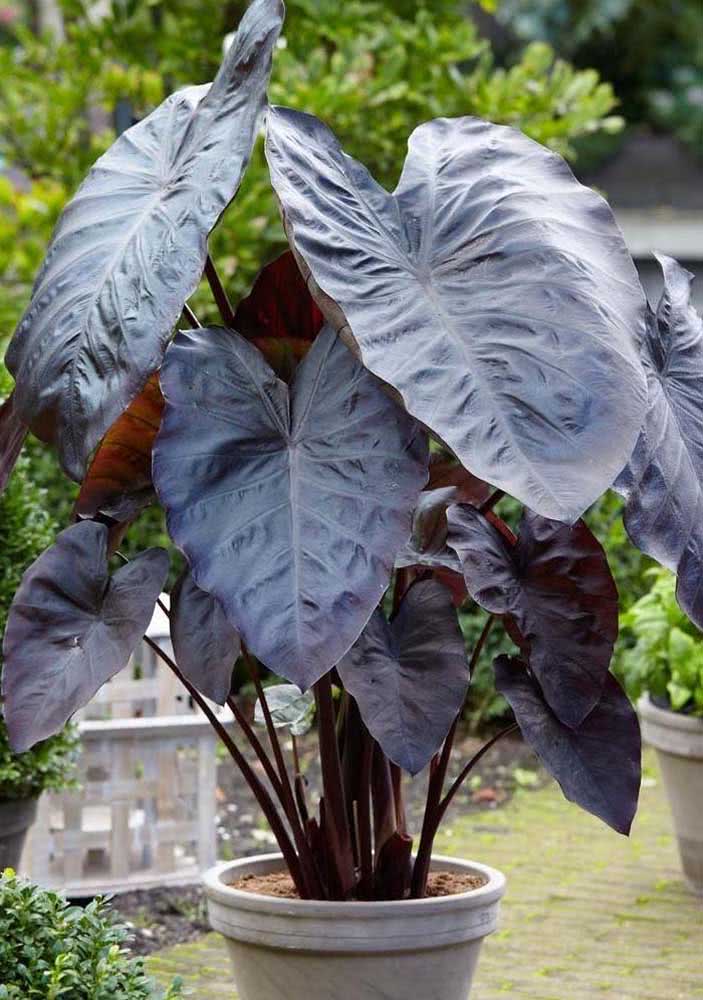
If you like foliage, then you need to know the black yam. This plant, which can be both soil and aquatic, has purple, almost black, heart-shaped leaves. They are perfect for interior decoration, although it is also used in outdoor landscaping.
Care with black yam includes exposure to the sun and regular fertilization with NPK 10-10-10 type fertilizer.
aquarium plants
Aquarium plants are generally smaller and have the ability to filter and eliminate impurities from the water. These plants also often serve as shelter and food for fish. Check out the most popular:
Image 15 – Tenellus.

Tenullus is one of the most used plants for lining aquariums. To grow it, however, it is essential to provide adequate lighting and a substrate rich in organic matter on the aquarium floor.
Image 16 – Riccia.
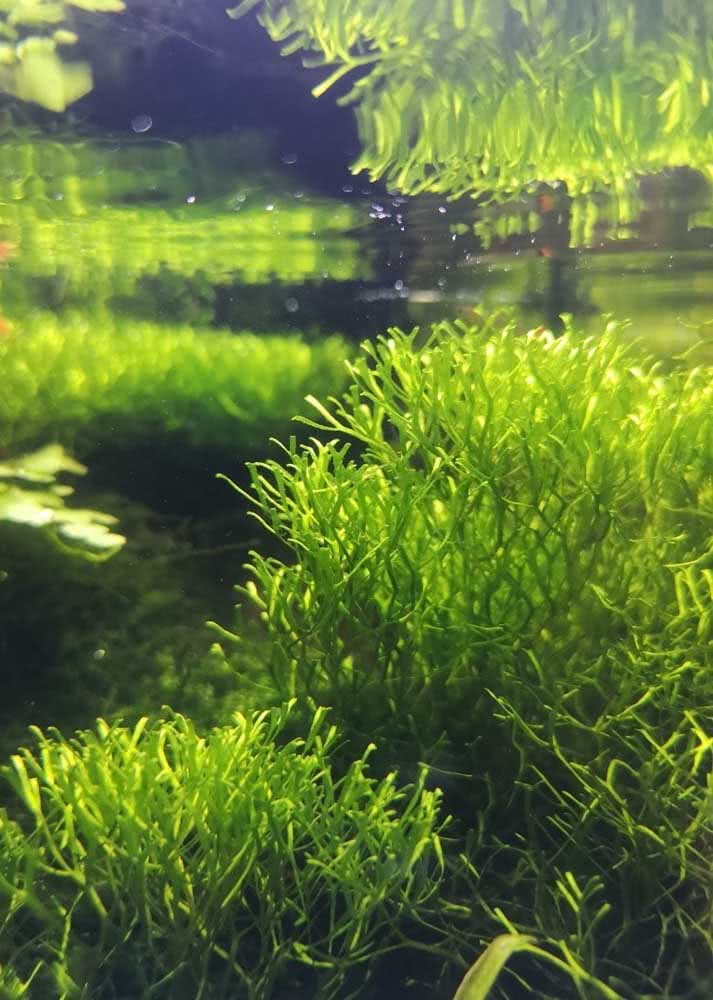
The riccia is a floating aquatic plant that serves as a shelter for small fish. It can be grown in home aquariums, but it’s important to provide enough light.
Image 17 – Salvinia.
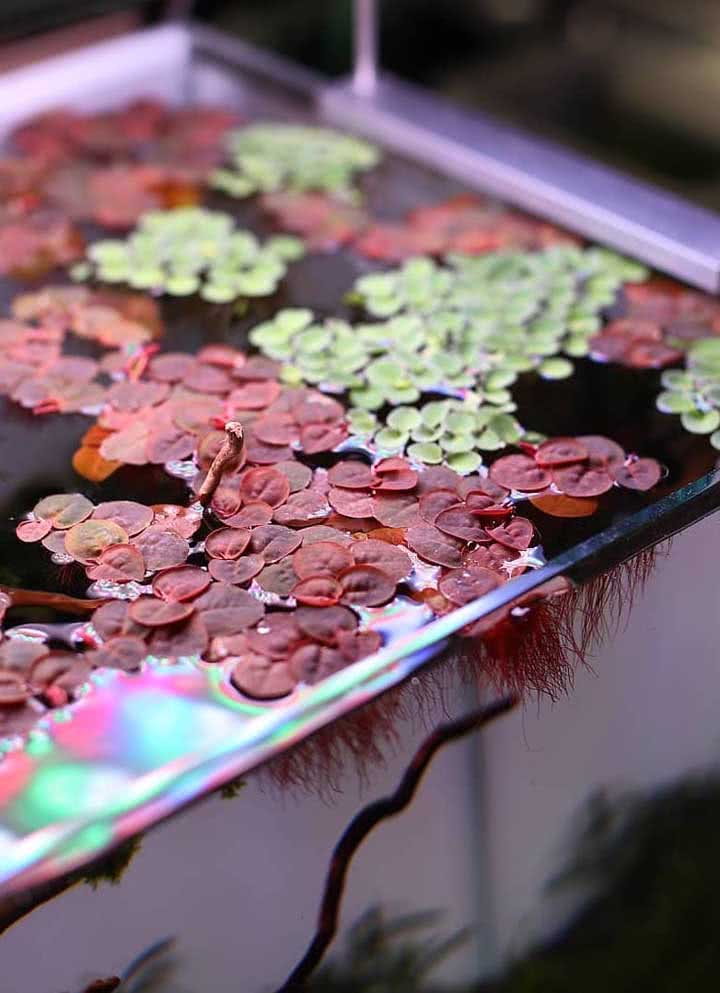
Floating, Salvinia decorates aquariums and even offers protection for fish. The tiny, furry leaves of this plant make a very beautiful look for aquariums, but you must be careful so that it doesn’t take over the entire space.
Image 18 – Eleocharis.

Eleocharis is a grass-like underwater aquatic plant. It serves both to decorate and to protect and shelter the fish.
Image 19 – African fern.
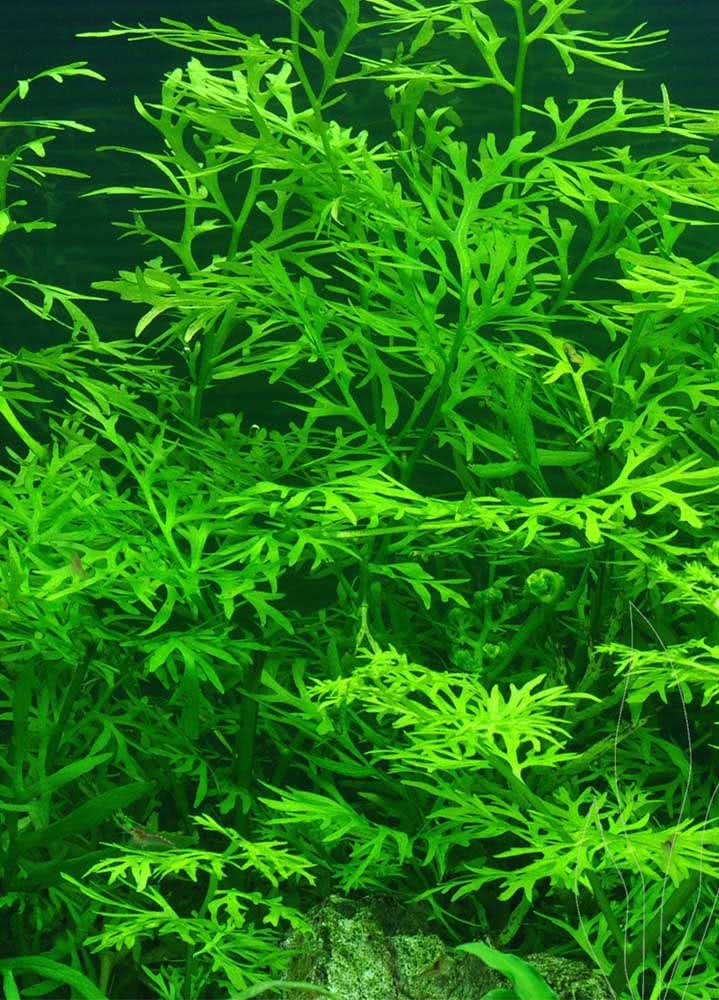
The African fern is, in fact, a species of fern, but small and with a submerged characteristic. In other words, it is perfect for small aquariums.
Image 20 – Lobelia

Lobelia is a mini aquatic plant that grows submerged. It’s super decorative, but it’s also useful as a shelter and protection for fish.
Image 21 – Java Moss (Taxiphyllum Barbieri)

Java moss has no roots and absorbs nutrients through its stems and leaves. The plant is usually fixed in small trunks to decorate the bottom of aquariums.
Image 22 – Elódea (dense Egeria)
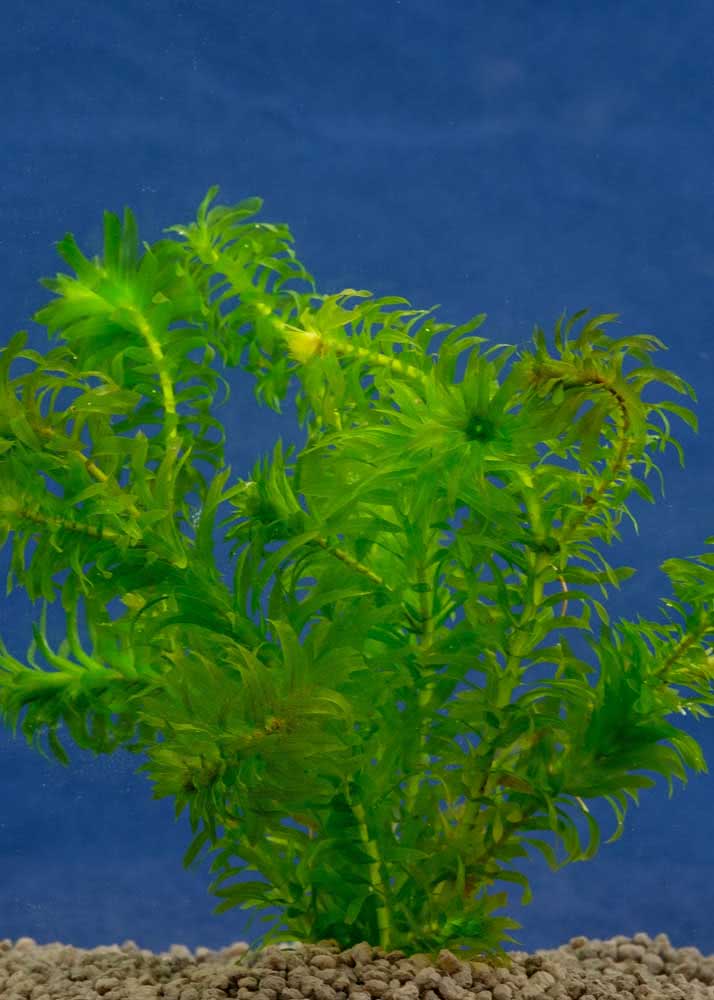
Elódea is the typical plant of those who are just starting to take care of an aquarium. It is easy to care for, but needs to be in contact with slime for nutrient absorption.
Image 23 – Foxtail (Cabomba furcata)

The fox tail is one of the most beautiful options for aquarium decoration. But the plant is demanding. It needs regular fertilization, high light exposure, fertile soil and a pH always balanced between 6 and 7.5.
Image 24 – Dwarf Anubia (Anubia barteri var. nana)
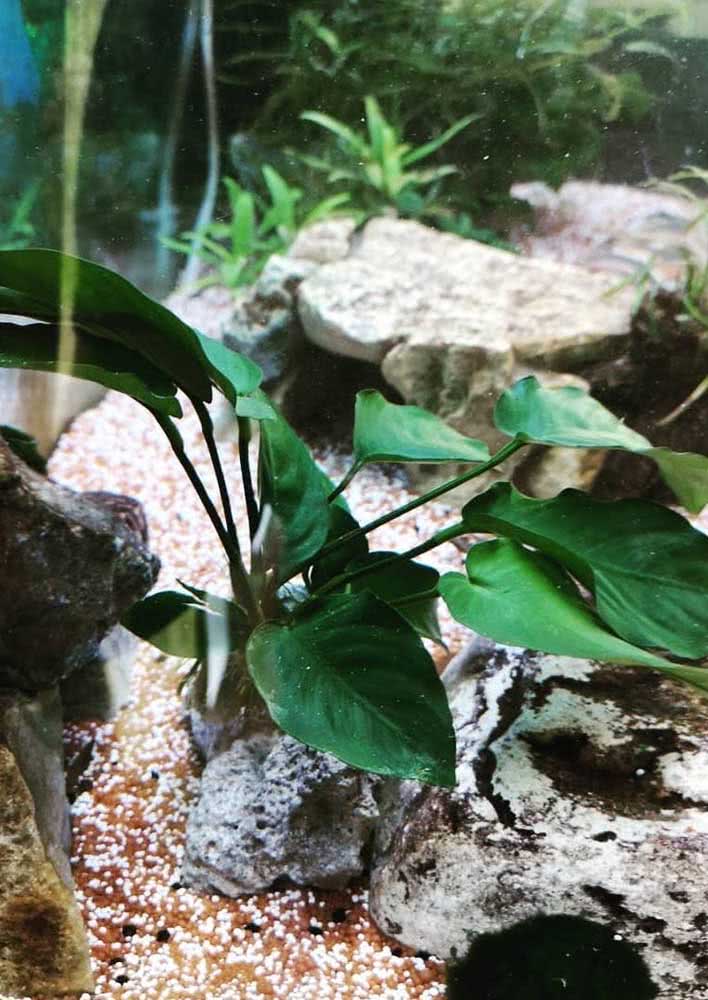
The dwarf anubia is an easily cultivated submerged aquatic plant. Its small leaves do not require much light to carry out photosynthesis. On the other hand, it is necessary to offer CO2 for the plant to develop properly.



